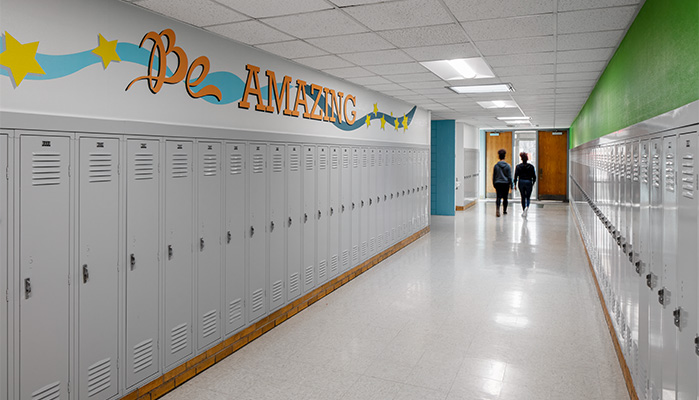
While the pandemic continues to draw public attention to environmental safety in schools, Iowa school districts continue to grapple with managing the regulated hazards in their buildings. Normal operations and maintenance may be delayed as more resources are dedicated to safety, cleaning and disinfection procedures.
Asbestos, lead-based paint and radon are three common environmental hazards that schools are required to manage. Various government and state agencies regulate these through management, testing protocols and reporting. Remembering when and what to test and keeping track of paperwork can be daunting both for large districts with many buildings and smaller districts with fewer resources.
Let’s review the requirements for each of these as they pertain to Iowa schools.
Asbestos
The management of asbestos is regulated through the Environmental Protection Agency’s (EPA) Asbestos Hazard Emergency Response Act (AHERA) program. AHERA requires schools to:
- Assess the condition of known or assumed asbestos-containing materials in their buildings every six months
- Conduct a full reinspection every three years by a licensed asbestos inspector
- Hire a licensed management planner to create the plan and make it available to the public upon request
Asbestos is a naturally occurring mineral that is used in building materials. Older buildings tend to have more issues regarding asbestos due to natural deterioration and normal wear and tear. However, new buildings may also have asbestos-containing materials which is why an asbestos survey is required for every renovation or demolition project.
Exposure to asbestos can cause health issues including lung cancer. All district maintenance and custodial staff are required to go through an annual two-hour awareness training class. This ensures employees working around asbestos-containing materials do so with the proper understanding and awareness.
Lead-Based Paint
Lead-based paint is a concern in buildings built before 1978 at which point lead was phased out. Lead-based paint causes developmental concerns in young children.
The Iowa Department of Public Health requires that lead-based paint be tested and managed in rooms and common areas where children six years or younger are present. This includes an initial testing program for these spaces, along with regular maintenance. If paint is disturbed during construction activities, lead dust sampling is required to document the space is safe for reoccupation. Keeping these spaces clean and secure prevents children from encountering paint chips or dust.
Shive-Hattery recommends testing for lead-based paint in all schools especially those with planned renovations. The Occupational Safety and Health Administration (OSHA) requires that contractors working around lead paint use lead-safe work practices to protect employees and building occupants.
Radon
Radon is a radioactive gas that is naturally released over time through the soil. It normally becomes trapped and concentrated in basement and ground floor classrooms. Radon is the second leading cause of lung cancer behind smoking and is a major health and safety threat.
The Iowa Department of Public Health (IDPH) regulates radon. Every two years, districts are required to test for radon in schools and programs involving children six years or younger. This includes preschool classrooms, common areas and before- and after-school programs. Though no state legislation mandates schools be tested for radon, it is a best practice to protect the health and safety of all building occupants.

The Benefits of an Environmental Professional
As school districts continue to work diligently to ensure the health, safety and wellness of their students, staff and community, bringing in an environmental professional to help manage regulated environmental hazards means one less worry for the school district. Dedicated professionals can help meet these requirements quickly and efficiently so school districts can stay focused on addressing the evolving situation surrounding the pandemic.
An environmental professional can help school districts fulfill and meet regulations by:
- Staying in compliance with state requirements and mandates
- Managing program deadlines
- Coordinating and communicating consistently with staff
- Updating and organizing environmental hazard documentation
- Conducting testing per the school’s schedule
- Handling design and bidding of mitigation projects
- Overseeing contractors during construction
- Being available for emergencies
Shive-Hattery’s environmental professionals work in collaboration with an in-house team of architects and engineers to pull in the expertise to meet your needs. Take a moment to review your environmental programs to determine if the time is right to reach out to an environmental professional.


